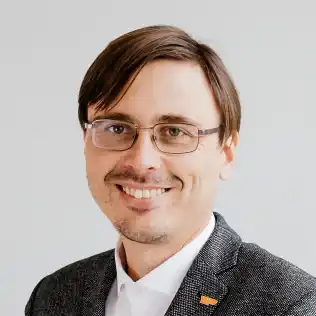
The data collection team works directly on site at accident scenes immediately after the accident. In addition to traditional accident recording, we are continuously testing and developing new and innovative methods for recording data sets relating to accident events.
Since 1999, around 1,000 road accidents per year have been documented as part of the GIDAS accident research project in the greater Dresden area. The VUFO team collects general statistical, medical and technical data. Following data processing and image editing, a reconstruction is carried out for each case.

The GIDAS-PCM is a database with simulated accident scenarios, which is created on the basis of the GIDAS database and the PCM format and can be used to analyze real accident data and to design and evaluate ADAS and HAF. It contains static information on the accident site as well as dynamic information on the accident participants up to the first collision.
Traditional on-site sketching is increasingly being supplemented by modern methods of 3D accident site recording. VUFO is actively following developments in this area and has also developed a work process for 3D accident site recording based on laser scans, photogrammetry or drone flights.
We are able to capture all conceivable accident situations in 3D and make them available to our own accident simulation department and our customers on request.

VUFO has developed a methodology whereby photogrammetric images of the so-called run-in areas are combined with a stereo camera device and color laser scans from the immediate collision area with a Leica P16 scanner. The point cloud is created using Agisoft software.
This point cloud is later used directly in the reconstruction. This means that the 3D survey can be used universally (the photogrammetrically created inlet areas can also be created in rework, while the scanner can be used in almost all conditions).

We do not record every accident in 3D immediately after the time of the accident. Rather, we are convinced that the higher quality that can be achieved in post-processing due to the lack of time pressure outweighs the disadvantages of immediate recording.
This opens up new possibilities for us. In addition to laser scans, which are still occasionally carried out, and standardized photogrammetry, we have once again added drone photography to our portfolio.
We have now recorded over 100 accident situations in three dimensions in the highest quality.
This point cloud is later used directly in the reconstruction. This means that the 3D survey can be used universally (the photogrammetrically created inlet areas can also be created in rework, while the scanner can be used in almost all conditions).
Current issues require prompt investigations. The data collection team carries out various special surveys in the vicinity of the traffic accident:

The reconstruction of traffic accidents is a complex process that brings together all available information and connecting facts from the accident documentation and data collection. Our focus is on the clarification of accident events and their sequence of events.

We produce customized reconstructions for our customers based on their individual requirements and data.
In addition to our reconstruction services, we offer training courses that impart accident analysis know-how on accident site documentation, accident reconstruction and the handling of electronic data.
From quick overview reconstructions to detailed analyses in PCM or Open X format, we offer a wide range of service packages to meet the individual needs of our customers.
Our many years of experience, comprehensive expertise and close cooperation with the GIDAS accident research project make us a reliable partner in road accident reconstruction. Contact us to find out more about our services and training courses.
EES is the velocity value at which a vehicle collides with an undeformable obstacle and shows comparable deformations. EES is an important and indispensable parameter for analyzing the collision phase:
Building on the unique data basis of our accident surveys, we have created a digital EES reference work that enables a convenient search for EES comparison cases. This catalog consists of extensive data records for several hundred vehicles. The scope of the catalog is constantly being expanded and new data records added.
The VUFO catalog provides you with a portal with extensive vehicle, collision and accident-specific data records. You can narrow down your search in the EES catalog using the following filter criteria:
To get an insight into the EES catalog, you can currently register for a free guest account. This account gives you two-day (basic) access to the EES catalog. See for yourself and gain an insight into the largest and most detailed German accident database. You can also choose between different license models.
Take advantage of our expertise in accident research to maximize safety and prevent accidents! Our tailored scientific advice helps you to precisely analyze the causes of accidents and develop effective preventive measures. With interdisciplinary know-how, our scientists will guide you to well-founded solutions.


If you would like to find out more about the application of the services, please get in touch with us. Thomas Unger will be happy to assist you.
Telephone: 0351 438989-35
E-mail: thomas.unger@vufo.de